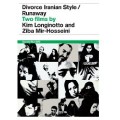| Reviews & Columns |
|
Reviews DVD TV on DVD Blu-ray 4K UHD International DVDs In Theaters Reviews by Studio Video Games Features Collector Series DVDs Easter Egg Database Interviews DVD Talk Radio Feature Articles Columns Anime Talk DVD Savant Horror DVDs The M.O.D. Squad Art House HD Talk Silent DVD
|
DVD Talk Forum |
|
|
| Resources |
|
DVD Price Search Customer Service #'s RCE Info Links |
|
Columns
|
|
|
Divorce Iranian Style / Runaway
Though woefully underrepresented on DVD, Kim Longinotto has a prodigious record as a filmmaker. Having completed more than a dozen long-form documentaries since 1976, her work is marked by an objective, but humanist approach that gives voice to women, especially those marginalized by patriarchy, around the world.
Longinotto met Ziba Mir-Hosseini author of Marriage On Trial: A Study of Islamic Family Law in 1996. The two hit it off and agreed to collaborate on a documentary about Islamic family law as practiced in Tehran. After quickly getting funding from Britain's Channel 4, the project languished for more than a year while permission was sought from the Iranian authorities. Finally the pair, along with sound-recordist Christine Felce, were permitted to film at a family court in the heart of Tehran for four weeks in the autumn of '97.
Divorce Iranian Style is presented in a spare style using 16mm handheld camera work, natural light, and no score. Constructed from a mere 16 hours of footage, there's a decided economy to the filming mostly overcome by voiceover from Longinotto providing procedural details about the cases not brought out on camera.
Shot primarily in the cramped family courtroom of clerical judge Deldar, a compassionate man of late middle-age, ably assisted by Mrs. Maher, a 27-year-veteran of the courts, the documentary focuses on four female petitioners. Through close observation of the particulars of these women's cases, the filmmakers provide insight into aspects of the larger legal system: a girl may lawfully marry at the age of puberty; a woman's nominal consent for marriage is required and may not be obtained through fraud or deceit; a man may take a second wife, but only if he has the permission of the first wife; a man may divorce for any reason, but a woman may do so only in limited circumstances such as if the man is impotent or insane; a man is typically awarded custodial control over offspring, but even if not may assert control at a later time if his ex-wife remarries; and women are entitled to financial compensation in a divorce, but frequently bargain it away for a quick divorce decree.
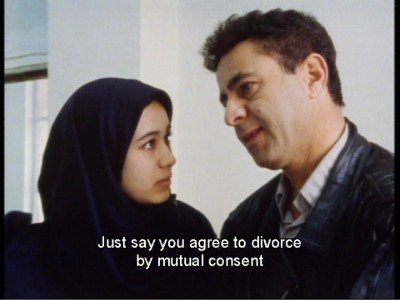 | 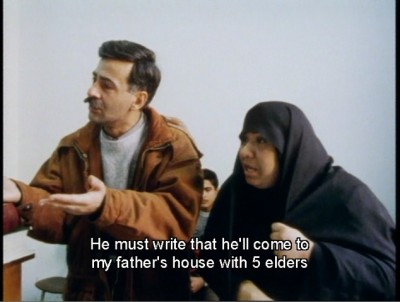 |
Perhaps even more startling than the aspects of Islamic law brought out by the cases is the unexpected forcefulness of the women in court. Though Islamic law hold them inferior to men, these women are not passively demure. Before the judge, they passionately and persuasively argue, plead, and cajole for what they want. By contrast to the animated women, the men mostly appear bewildered, meek, and flat-footed.
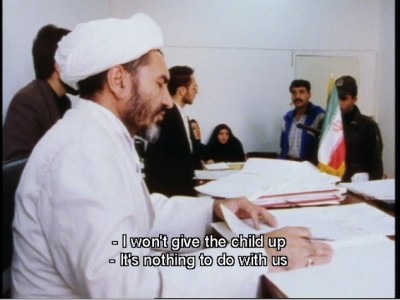 | 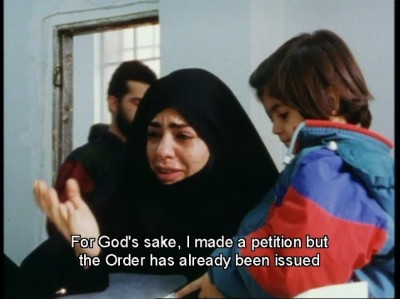 |
Four years after completing Divorce Iranian Style, Kim Longinotto and Ziba Mir-Hosseini collaborated again on Runaway. Filmed at a shelter for runaway girls and abused women in Tehran, the filmmakers once again use a handful of personal narratives to suggest larger truths about the society. Presented without voiceover this time, Runaway otherwise retains the aesthetics of Divorce Iranian Style. Over the course of a few weeks, the filmmakers follow the arrival, adjustment, and departure of their subjects.
The shelter is run by a group of urban, professional women of good conscience and strong will. These women are able social workers as apt at spotting deception from the girls as they are at brokering concessions from the families seeking to be reunited with the runaways.
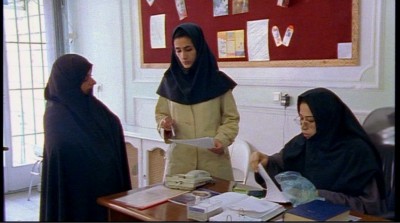 | 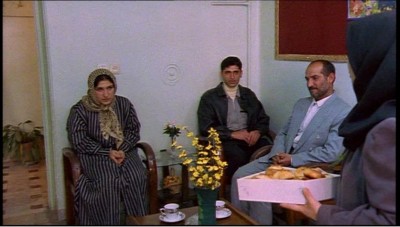 |
At perhaps twenty years of age, Setarah is the oldest of the young runaways featured. After the death of her mother and sister, her father became a drug addict and pimped her out. She ran away and turned tricks on street before coming to the shelter. Despite her past misfortune, Setarah seems well-adjusted and caring - gladly taking on a motherly role with the younger girls. During the course of the filming, Setarah gets a job at a factory and moves out on her own, though one hopes she may eventually find her way back to the shelter as a counselor.
The filmmakers are there for the arrival and departure of most of the other girls featured. Most arrive after abuse at home, though the particulars range from beatings, to threat of rape, to merely fear of bringing home a bad report card. Following a reunion with family mediated by the shelter staff, the girls typically return home, but they do so of their own accord, with future state supervision of the home guaranteed, and with the assurance that they can return to the shelter if their home lives again become intolerable.
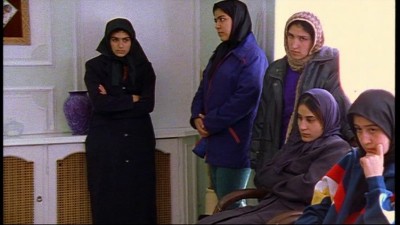 | 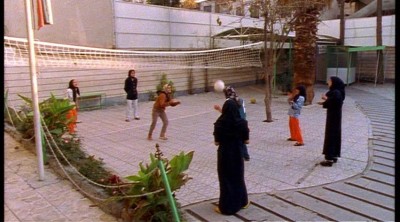 | 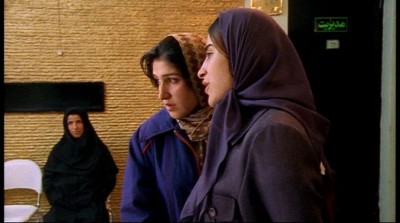 |
Presentation
Divorce Iranian Style / Runaway has been released from the UK-based boutique DVD label Second Run on a single dual-layered DVD which is PAL-encoded but not region restricted.
Video:
Divorce Iranian Style and Runaway were recorded on 16mm film, mostly handheld, using natural light. Divorce Iranian Style is presented in 1.33:1 aspect ratio and appears slightly soft. Runaway is presented in anamorphic 1.78:1 widescreen. The image is grainy and suffers from cross-coloration, but otherwise has improved contrast, detail and black levels over the companion film. Hair in the filmgate is a frequent problem for Divorce Iranian Style, but otherwise both films look acceptable given the production limits. The transfer looks acceptable with only a few manipulations and distortions of the film image noticeable.
Audio:
The 2.0 channel audio is adequate with clear dialogue, minimal noise and no noticeable dropouts or distortions. Original audio on both documentaries is Farsi with occasional English narration on Divorce Iranian Style.
Optional subtitles are provided in English and Arabic.
Extras:
Extras include a booklet featuring an essay by documentarian Mark Cousins analyzing the two films featured and summarizing Kim Longinotto's oeuvre generally, and an essay by Longinotto's co-director Ziba Mir-Hosseini about the filmmaking process, especially the difficulty of getting requisite permission from the Iranian authorities for filming. Also included is a new twelve-and-a-half-minute interview with filmmaker Kim Longinotto about her interest in documenting substantive feminist issues in Iran, her experiences with Ziba Mir-Hosseini, and further details of the logistics of the production.
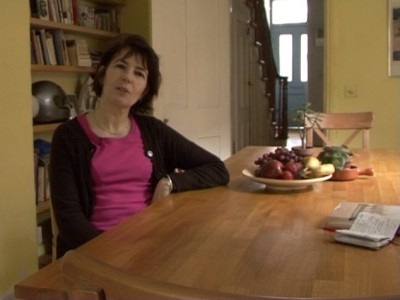
Final Thoughts:
Divorce Iranian Style / Runaway marks another superior release from Second Run. Fans of sociological documentaries should be well pleased.
|
| Popular Reviews |
| Sponsored Links |
|
|
| Sponsored Links |
|
|
| Release List | Reviews | Shop | Newsletter | Forum | DVD Giveaways | Blu-Ray | Advertise |
|
Copyright 2024 DVDTalk.com All Rights Reserved. Legal Info, Privacy Policy, Terms of Use,
Manage Preferences,
Your Privacy Choices | |||||||









